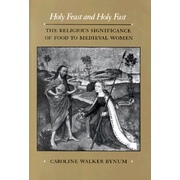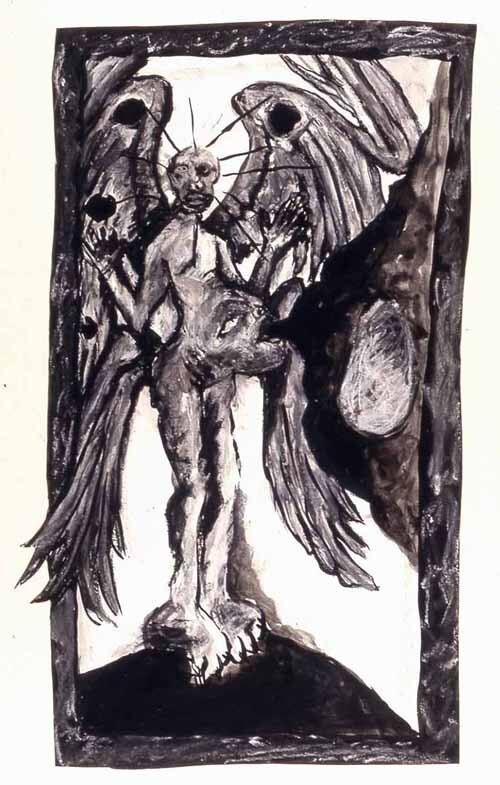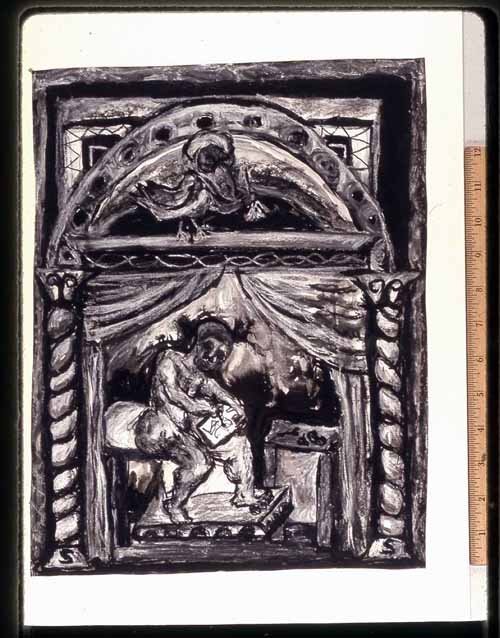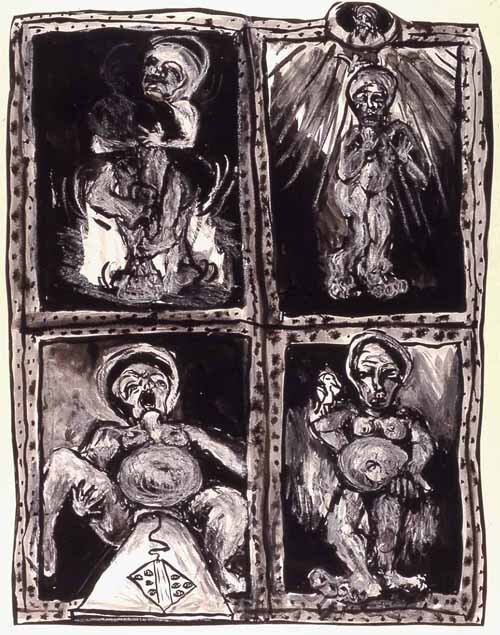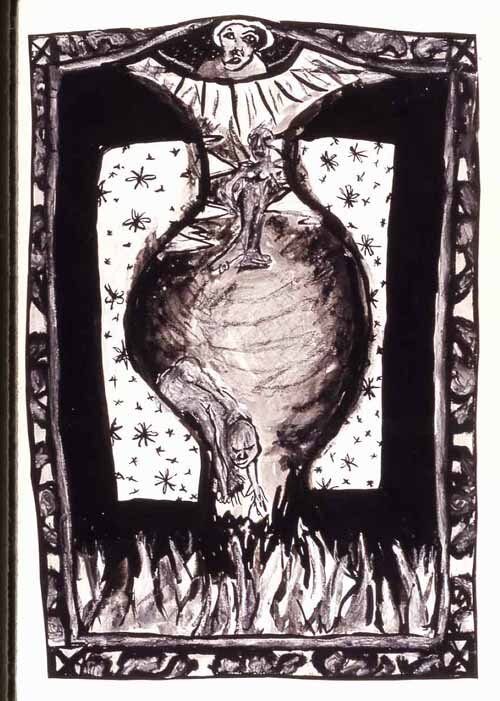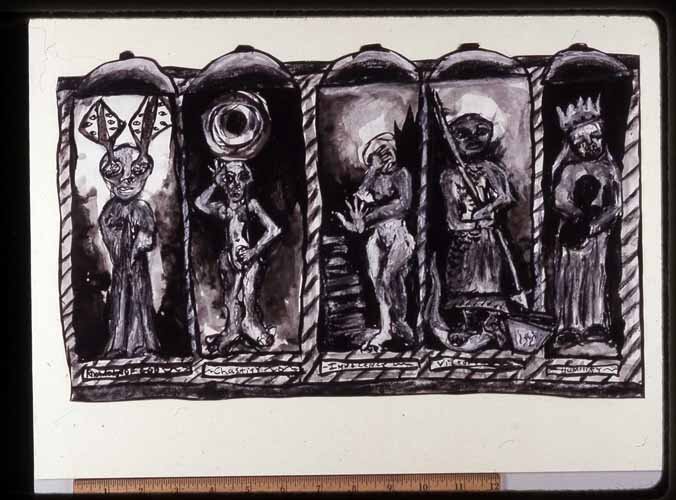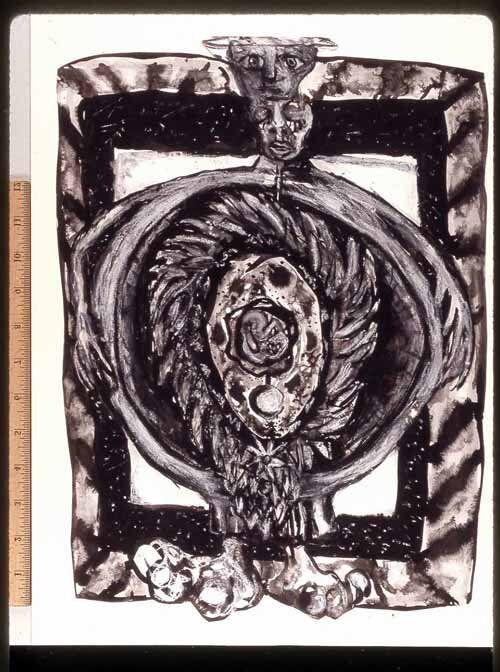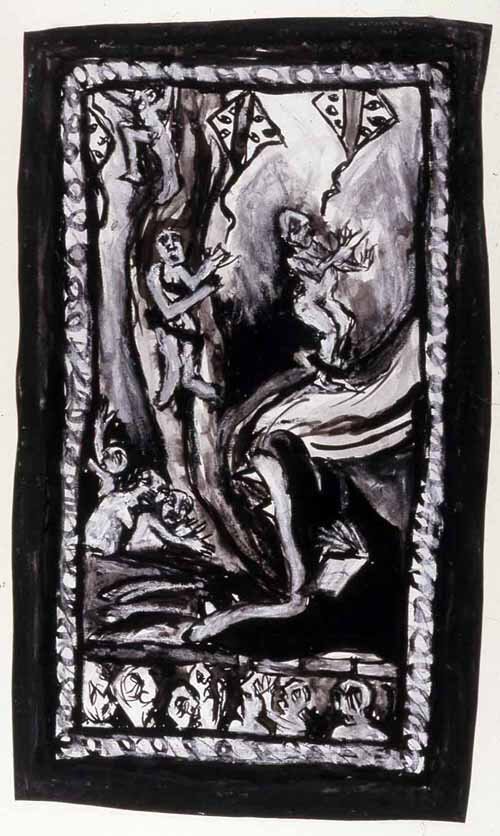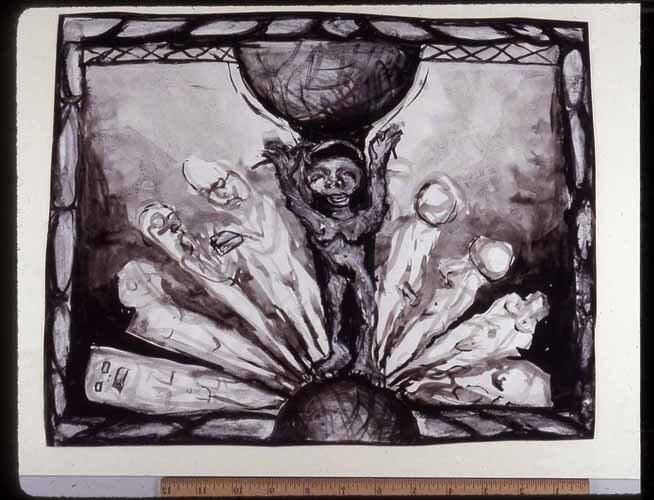A couple of people have asked me to post about Hildegard of Bingen, 12th century German mystic and visionary. Today I’ll post about some of my artwork she has inspired; tomorrow I’ll write about Hildegard’s life & why it’s is so important to me.About 20 years ago (Now that in itself is crazy!!) I made sculpture of Hildegard. I was recently looking for the documentation of it and it’s vanished. So, I’m going to describe it here.
The sculpture was of Hildegard undergoing a mystical ecstasy. She was standing naked, writhing in that sweet agony- somewhat akin to this etching detail.I rigged a door in her stomach which when opened, played Hildegard’s music. Inside were stashed my Hildegard drawing series. But the door was locked with a padlock. I placed the key inside her womb. You had to reach up into her birth canal into the womb to get it.
I invited my Medieval Spirituality professor along with my class to view the sculpture. I asked him to open the sculpture. He accepted and found himself sticking his arm up to his elbow into Hildegard’s birth canal in front of a group giggling girls. When the stomach panel was finally unlocked and opened, the sound of the music was shocking. Music entered a charged space. Very dramatic, but also a lot of fun.
UPDATE: I want to say a little bit more about yesterday’s post. When I had that professor stick his hand up into Hildegard’s birth canal. It wasn’t meant as a sexual moment, although it obviously has those overtones. That professor was nervous & self conscious when he did it. He didn’t know what he would find and he knew he was being watched by his class. Hildegard’s womb in the moment of a mystical ecstasy is charged with the Divine. It is the microcosm of the Divine womb, the source of all creative energy. Remember the mystical rule, as above so below. So I meant to evoke the fear that we feel when approaching God: the fear of the unknown and the fear of annihilation. Squatting down and reaching up into an unknown darkness- to me that sounds a lot like entering into the mystical path..








